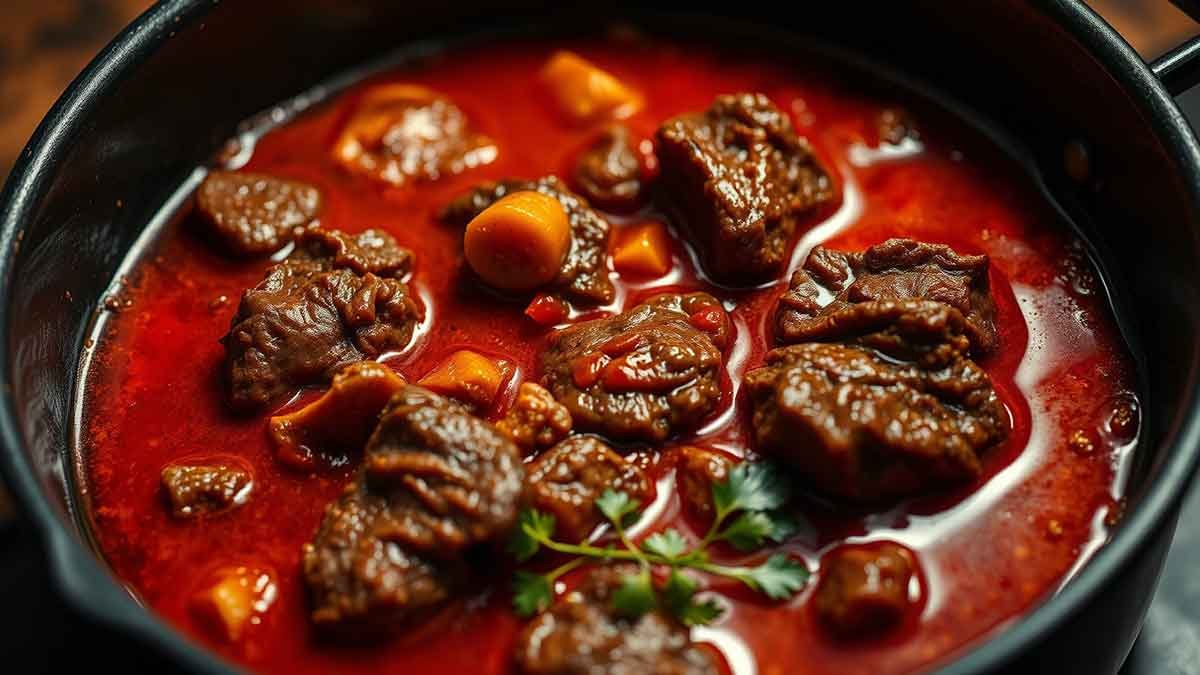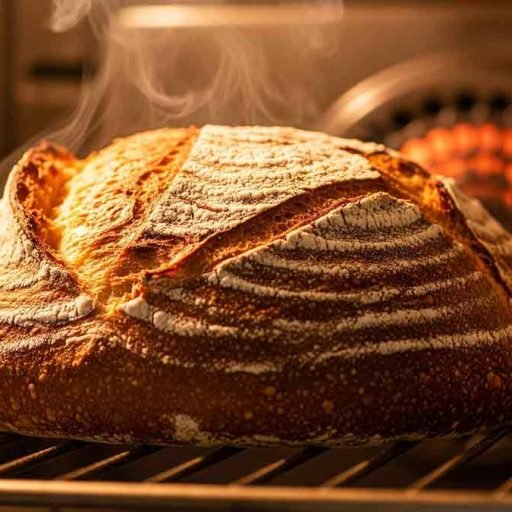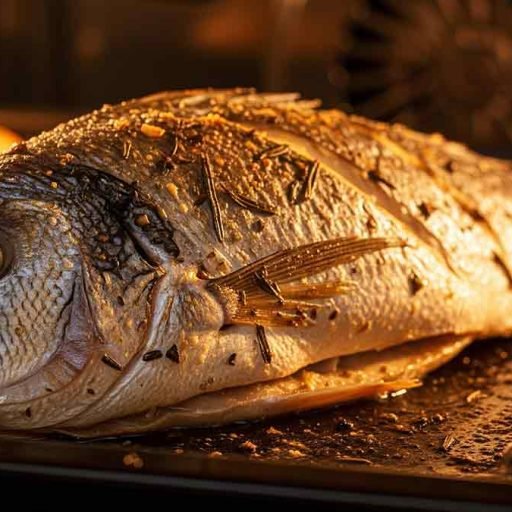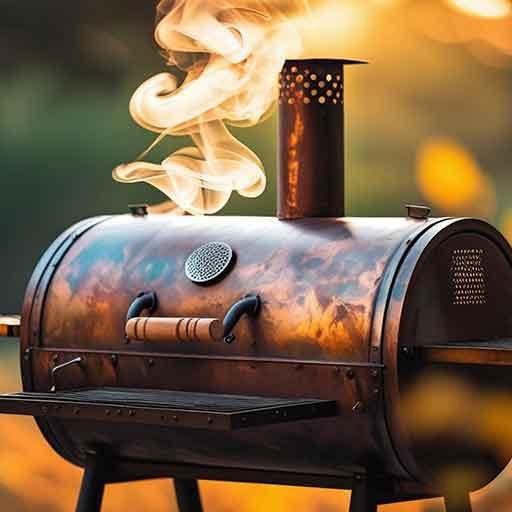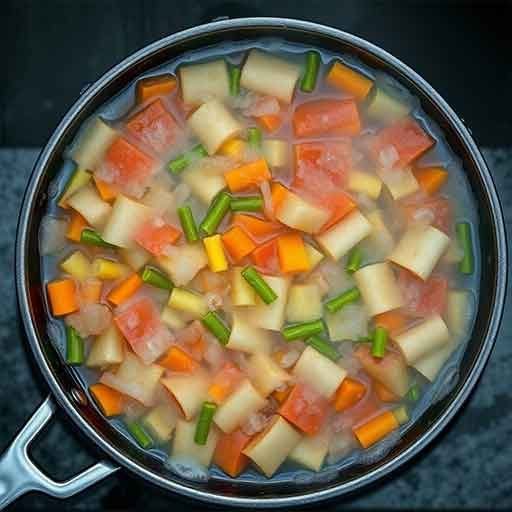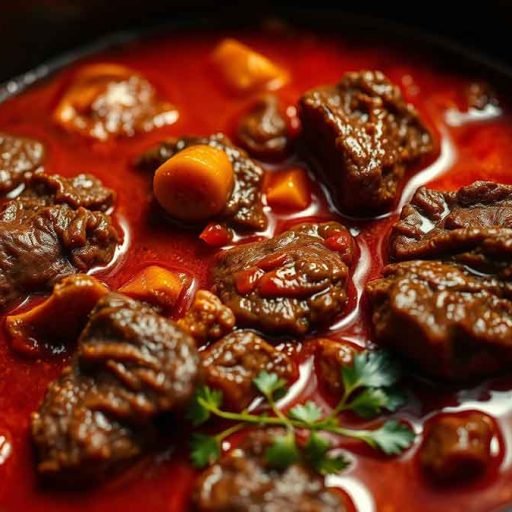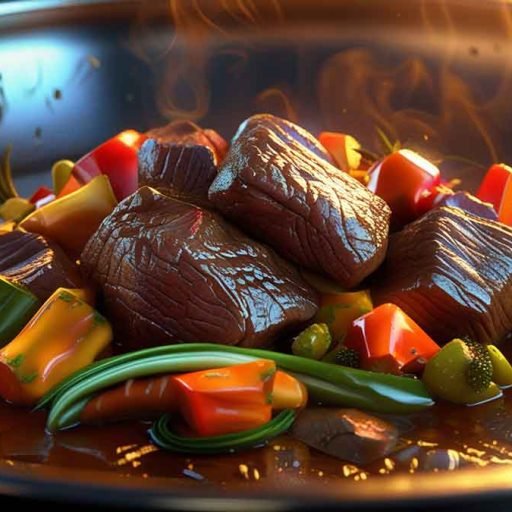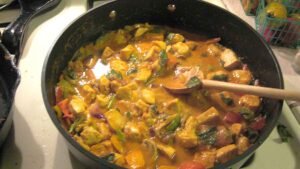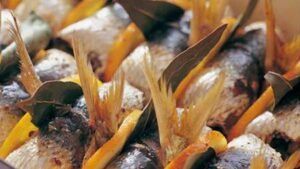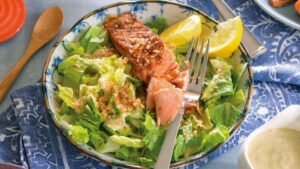Stewing also uses a combination of dry– and moist-heat cooking methods. Stewing is most often associated with smaller pieces of food that are first browned in a small amount of fat or oil or blanched in a liquid. Cooking is then finished in a liquid or sauce, which is served as part of the finished dish. Stewed foods have enough liquid added to cover them completely and are simmered at a constant temperature until tender. Cooking time is generally shorter for stewing than for braising because the items are smaller. When stewing most plants, which lack tough muscle fibers, cooking time tends to be shorter than for animal products.
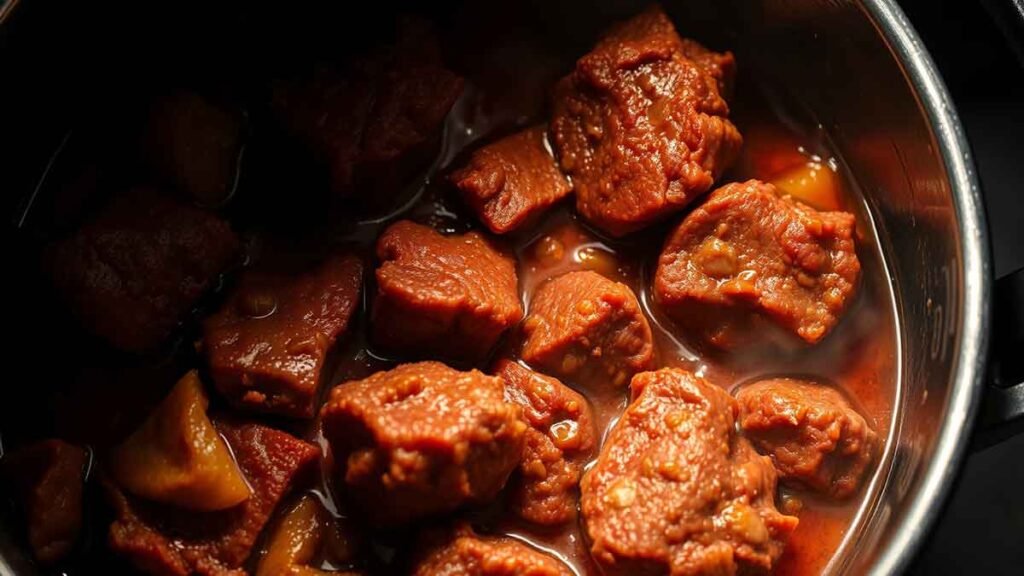
Procedure for Stewing Foods
- 1 Trim and cut the food to be stewed into small, uniform-sized pieces. Dredge the pieces in flour, if desired.
- 2 Heat a small amount of fat in a heavy pan. Sear the food on all sides, developing color as desired.
- 3 Add vegetables, seasonings, or any other ingredients and sauté.
- 4 Add flour or roux to thicken the liquid during cooking.
- 5 gradually add the cooking liquid, stirring to prevent lumps. The liquid should completely cover the principal items.
- 6 Bring the stew to the appropriate temperature. Cover and place in the oven at 250–300°F (120–150°C) or continue to simmer on the stovetop until the principal items of meat, fish, fruit or vegetables are tender. Doneness is usually determined by texture and tenderness.
- 7 Remove the principal items and hold them in a warm place.
- 8 Thicken the sauce as desired.
- 9 Return the principal items to the stew. if not added during the cooking process, vegetables and other garnishes may be cooked separately and added to the finished stew. Degrease the stew as necessary.
